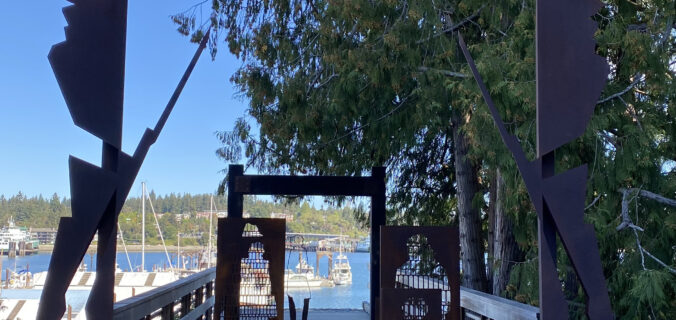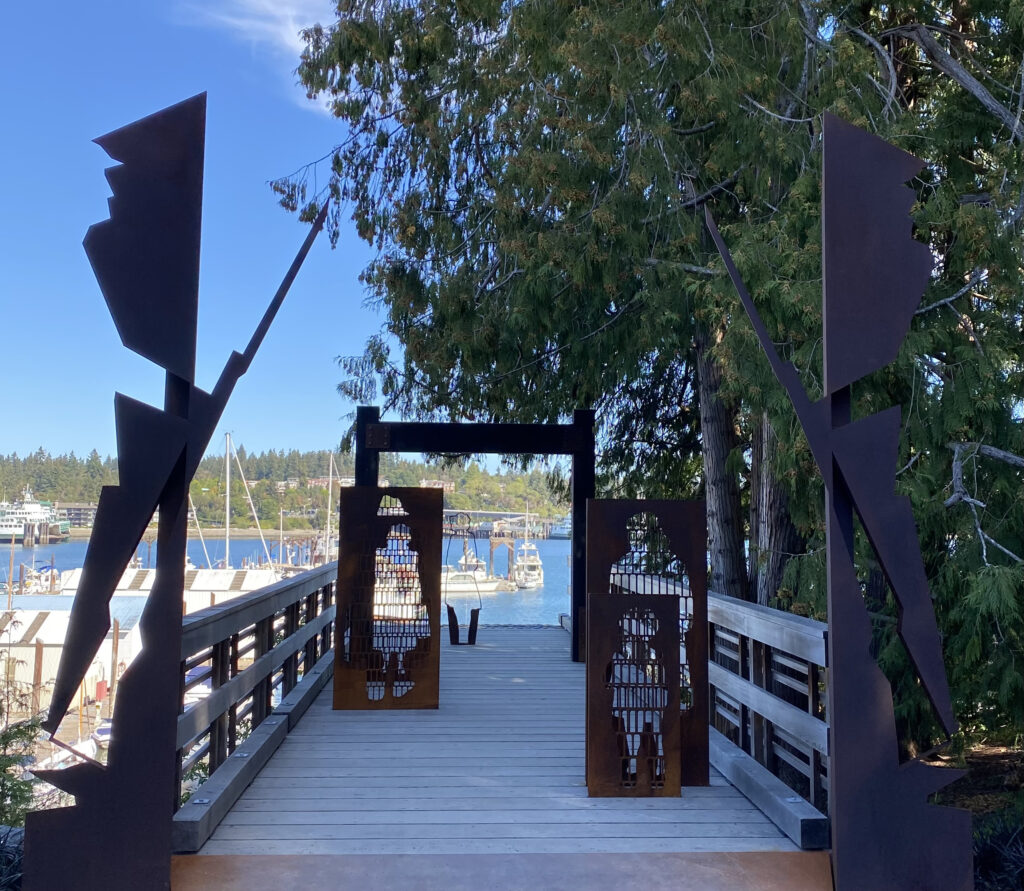
On March 24th, Japanese of Bainbridge Island were told they would be forcibly removed in six days
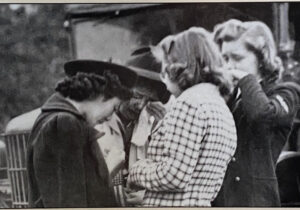
because they were of Japanese ancestry. They were forced to sell or rent out their homes, businesses, and farms. One poignant photo displayed at the memorial shows high school girls gathering in tears as they learned their classmates were being forced to leave.
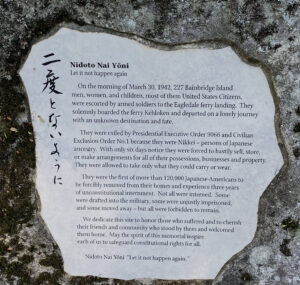
On March 30, 1942, the U.S. Military showed up on Bainbridge Island to round up all Japanese Americans residing on Bainbridge Island to force by rifle and bayonet points to board the ferry at the Eagledale Ferry Dock. The reasoning was that we were in a war with Japan, and there was fear that those on the island would aid the Japanese. Of course, mothers and children were also rounded up and forced by rifle and bayonet points to board even though they posed no threat to our military pursuit.
Bainbridge Island was the first place where the Japanese Americans were forced to leave. Those forced to board were taken to Manzanar where they were locked inside an American Concentration Camp. Camps were surrounded by barbed wire fences and were manned with searchlights and machine guns in guard towers.
In total, there were 75 incarceration sites throughout our country with at least 120,000 known Japanese sent to these sites. However, the total number probably exceeds that amount.
In 2000, the Internment and Exclusion Memorial Committee formed to create a meaningful memorial to honor those who experience immeasurable suffering from this happening.
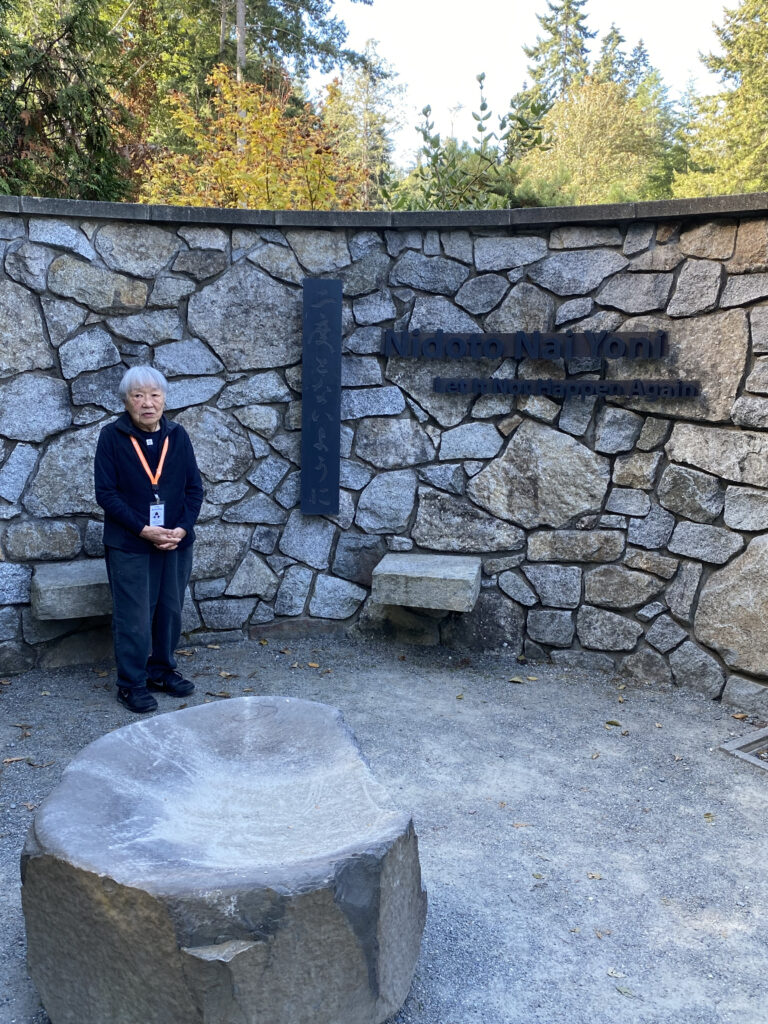
A group of media from the International Food Wine Travel Writers Association on a trip to Bainbridge Island and the Kitsap Peninsula experienced this awe-inspiring memorial. Just being in the presence of the memorial caused a lot of us to become filled with tears. It is such an emotional memorial to a horrible and shameful event in which our country engaged.
As we approached the memorial, I wondered why it said, “Japanese American Exclusion Memorial.” It finally occurred to me that it said “American” because most of the Japanese forced to leave were American citizens.
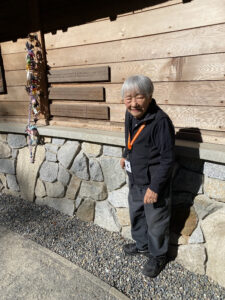
We were so fortunate to have Lilly Kitamoto, a petite and soft spoken woman, as our tour guide of the memorial site. Lilly expressed thankfulness because those rounded up in the Seattle area (after Bainbridge Island) were forced to live in animal stalls from fairgrounds facilities. As they boarded the boat,Lilly was told by her mother, “We are going on a vacation, a special vacation, and we are going by ferry.”
Many of the Japanese had come to Bainbridge Island to work in the lumber mills. They had their own village called Yama with a store, a dance hall, and both Buddhist and Christian churches. When the mills closed, many of the Japanese became strawberry farmers.
Some of the men were arrested and taken away before Lilly and her mother and siblings were taken away. Lilly’s father worked in Seattle at Friedlander’s Jewelry Store and was never able to come home to his family before being arrested by the FBI and sent to a camp.
Lilly, 7 at the time, was forced to board the ferry along with her mother, Shigeko; brother, Frank, at age 2; a sister, Frances, age 5; as well as her baby sister, Jane, age 9 months. Lilly pointed out her family plaque placed on the curving wall that holds the names of all those forced to leave.
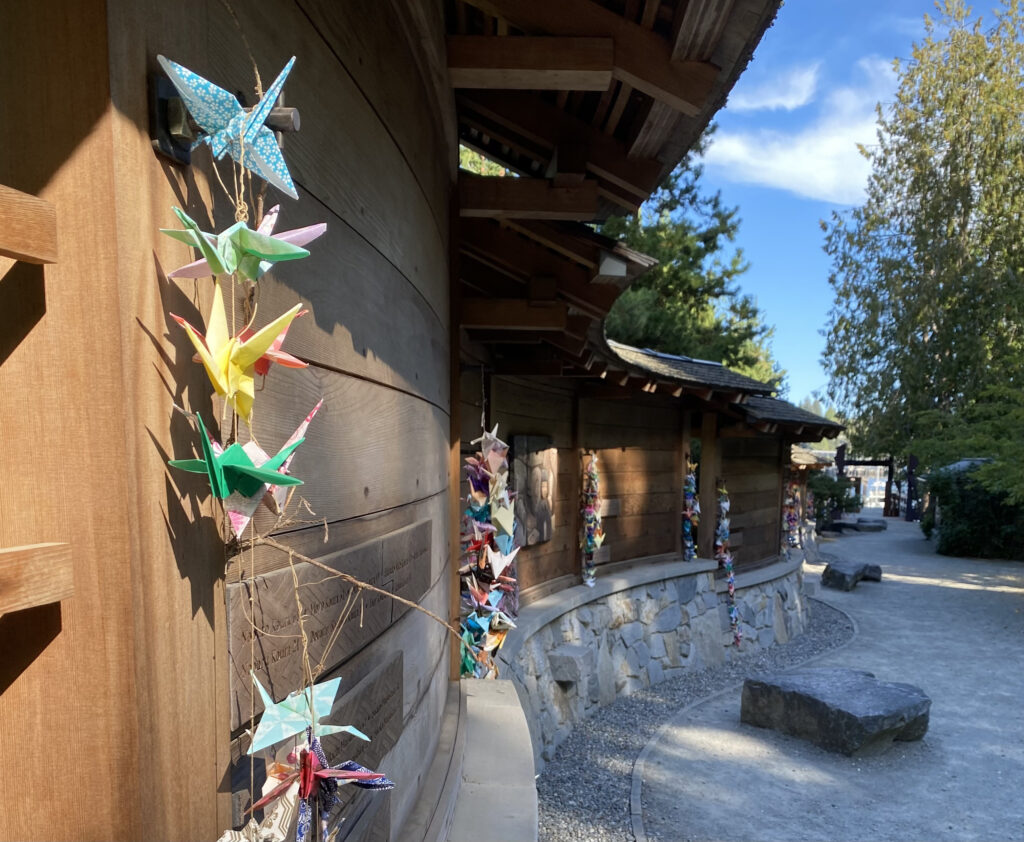
Much thought was given to the design of this memorial. The wall is curving to signify that life in general isn’t a straight line. The roofs are designed to look like strawberry packing crates. Pristine cedar trees that fell in a tsunami were used as part of the memorial.
At the end of the wall are metal sculptures shaped like soldiers with rifles and bayonets who rounded up the Japanese Americans. The outlines of people are made with tags they wore when they were forced to leave. Beyond the metal sculptures at the end of the walkway are metal footprints of different sizes for those forced to board at the end of the dock. (Shown in the top photo.)
Not only is this a beautiful and poignant memorial, it is such an important memorial to remind all of us, “Nidoto Nai Yoni” which means “Let it not happen again.”
